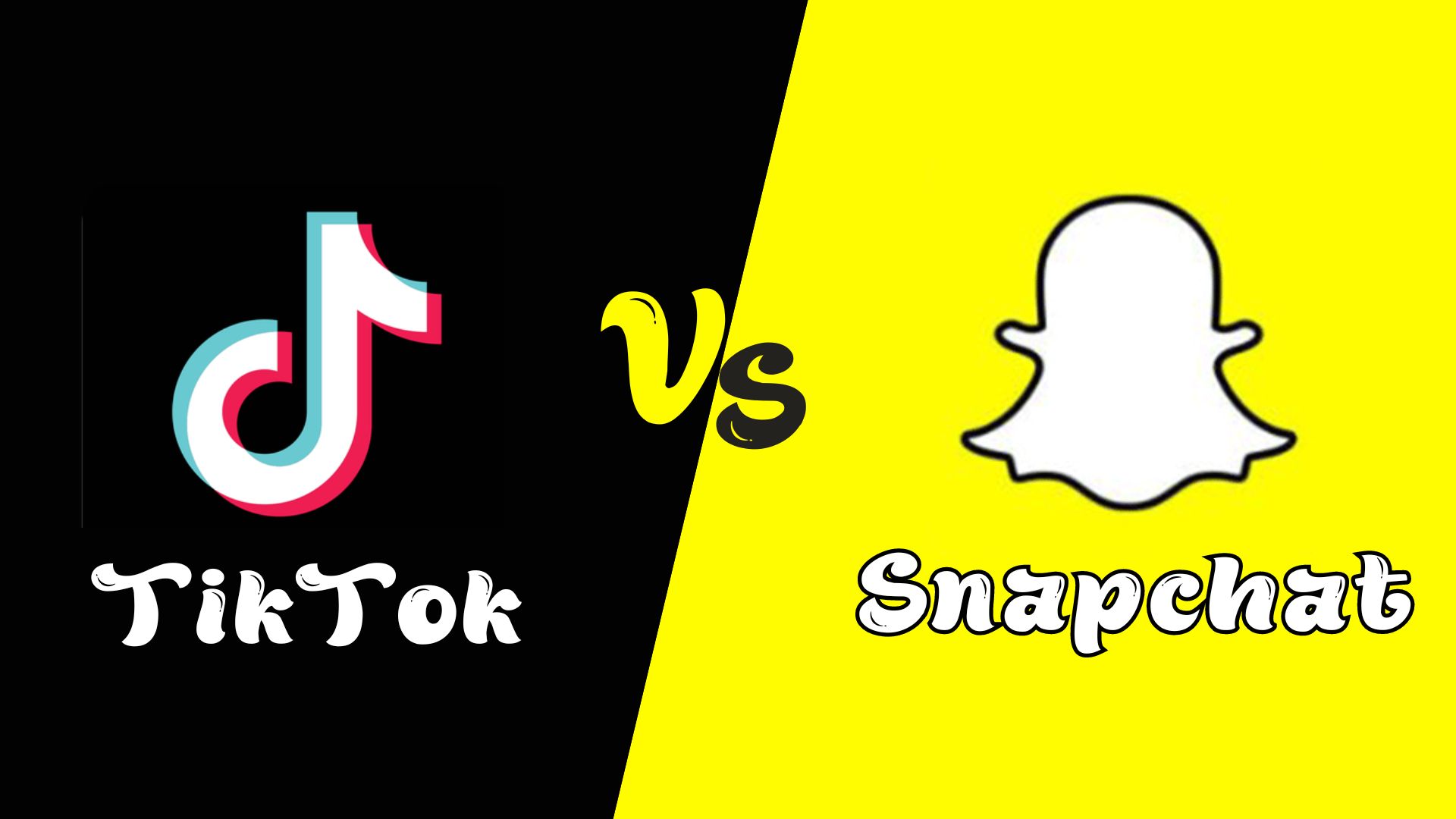Social media platforms have become an integral part of modern life, shaping how we communicate, share content, and express ourselves online. Among the plethora of platforms available, TikTok vs Snapchat have emerged as two of the most popular choices, particularly among younger generations. In this article, we’ll delve into the features, strengths, and weaknesses of both TikTok and Snapchat, analyzing their appeal and exploring how they differ in terms of content, user experience, and overall impact.
In the vast expanse of social media platforms, TikTok and Snapchat have emerged as formidable contenders, captivating the attention of millions worldwide. Born from different origins and evolving through distinct trajectories, these platforms have redefined how we interact, create, and consume content online. TikTok, with its mesmerizing short-form videos and viral trends, stands in stark contrast to Snapchat’s ephemeral messaging and playful AR experiences. As we delve into the depths of this rivalry, we uncover not just a battle for users’ attention but a clash of ideologies, shaping the future landscape of social media.
TikTok vs Snapchat
Origin and Evolution
-
- TikTok: TikTok, originally launched as Douyin in China in 2016 by ByteDance, quickly gained global popularity after its international release in 2018. The platform allows users to create and share short-form videos set to music, with a focus on creativity and entertainment.
- Snapchat: Snapchat, founded in 2011 by Evan Spiegel, Bobby Murphy, and Reggie Brown, pioneered the concept of disappearing messages and stories. Initially known for its ephemeral messaging feature, Snapchat has evolved to include various multimedia content formats like photos, videos, and augmented reality (AR) lenses.
Content Formats
-
- TikTok: TikTok is primarily known for its short-form video content, typically ranging from 15 to 60 seconds in length. Users can create a wide variety of content, including lip-syncing, dancing, comedy skits, educational tutorials, and more. The platform’s algorithm-driven “For You” page customizes content based on user preferences, making it easy to discover new and engaging videos.
- Snapchat: Snapchat offers a diverse range of content formats, including Snaps (photos and videos), Stories (collections of Snaps that disappear after 24 hours), Discover (curated content from publishers and creators), and AR lenses (interactive filters and effects). The platform’s emphasis on ephemeral content encourages spontaneity and authenticity among users.
User Demographics
-
- TikTok: TikTok has gained immense popularity among Gen Z and younger Millennials, with its user base skewing towards teenagers and young adults. The platform’s vibrant and diverse community thrives on trends, challenges, and viral content, fostering a sense of belonging and creativity.
- Snapchat: Snapchat also appeals predominantly to younger demographics, particularly teenagers and young adults. However, its user base extends to older age groups as well, with a significant portion of users aged 25 and above. The platform’s casual and playful nature encourages users to share everyday moments with friends.
Engagement and Interactivity
-
- TikTok: TikTok offers a highly engaging experience, with features like duets, stitches, and challenges enabling users to interact with each other’s content. The platform’s addictive scrolling interface and endless stream of content make it easy for users to spend hours browsing through videos.
- Snapchat: Snapchat promotes interactivity through features like Snapstreaks (a consecutive days count of exchanging Snaps with friends), Bitmoji integration, and multiplayer games. The platform’s emphasis on real-time communication and spontaneous sharing fosters genuine connections among users.
Monetization Opportunities
-
- TikTok: TikTok has introduced various monetization features for creators, including the TikTok Creator Fund, brand partnerships, sponsored content, and live streaming gifts. Influencers can earn income by collaborating with brands, promoting products, and engaging with their audience through sponsored campaigns.
- Snapchat: Snapchat offers monetization opportunities through its Snap Ads, sponsored AR lenses, Discover partnerships, and premium content subscriptions. Creators can also earn revenue through Snapchat’s Spotlight feature, which rewards users for creating engaging Snaps that go viral.
Privacy and Safety
-
- TikTok: TikTok has faced scrutiny over privacy concerns and data security, particularly regarding its Chinese ownership and data collection practices. The platform has implemented measures to enhance user privacy, including content moderation, data transparency reports, and age verification tools.
- Snapchat: Snapchat prioritizes user privacy and safety, with features like Snap Map (location sharing) and Ghost Mode (incognito location) allowing users to control their visibility and sharing settings. The platform also provides resources and reporting tools to combat cyberbullying and harmful content.
Future Outlook
-
- TikTok: TikTok continues to innovate and expand its reach, with plans to further monetize the platform, enhance creator tools, and diversify content offerings. The platform’s global popularity and cultural impact position it as a leading force in the social media landscape.
- Snapchat: Snapchat remains committed to evolving its platform and adapting to changing user behaviors and preferences. With a focus on AR technology, original content partnerships, and community engagement, Snapchat aims to maintain its relevance and appeal in the competitive social media market.
See also – Snapchat vs WhatsApp
Conclusion
TikTok and Snapchat represent two distinct yet influential forces in the realm of social media, each offering unique features, content formats, and user experiences. While TikTok excels in short-form video content and viral trends, Snapchat distinguishes itself through ephemeral messaging, augmented reality, and real-time communication. As these platforms continue to evolve and shape online culture, their impact on communication, creativity, and digital entertainment will undoubtedly endure.
In the dynamic landscape of social media, the competition TikTok vs Snapchat serves as a testament to the ever-changing preferences and behaviors of users worldwide. Whether you’re a casual content creator, an aspiring influencer, or simply a social media enthusiast, the choice between TikTok and Snapchat ultimately comes down to personal preference, content preferences, and desired user experience.

